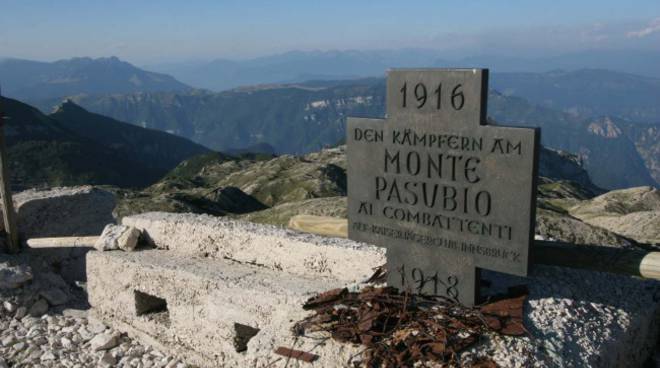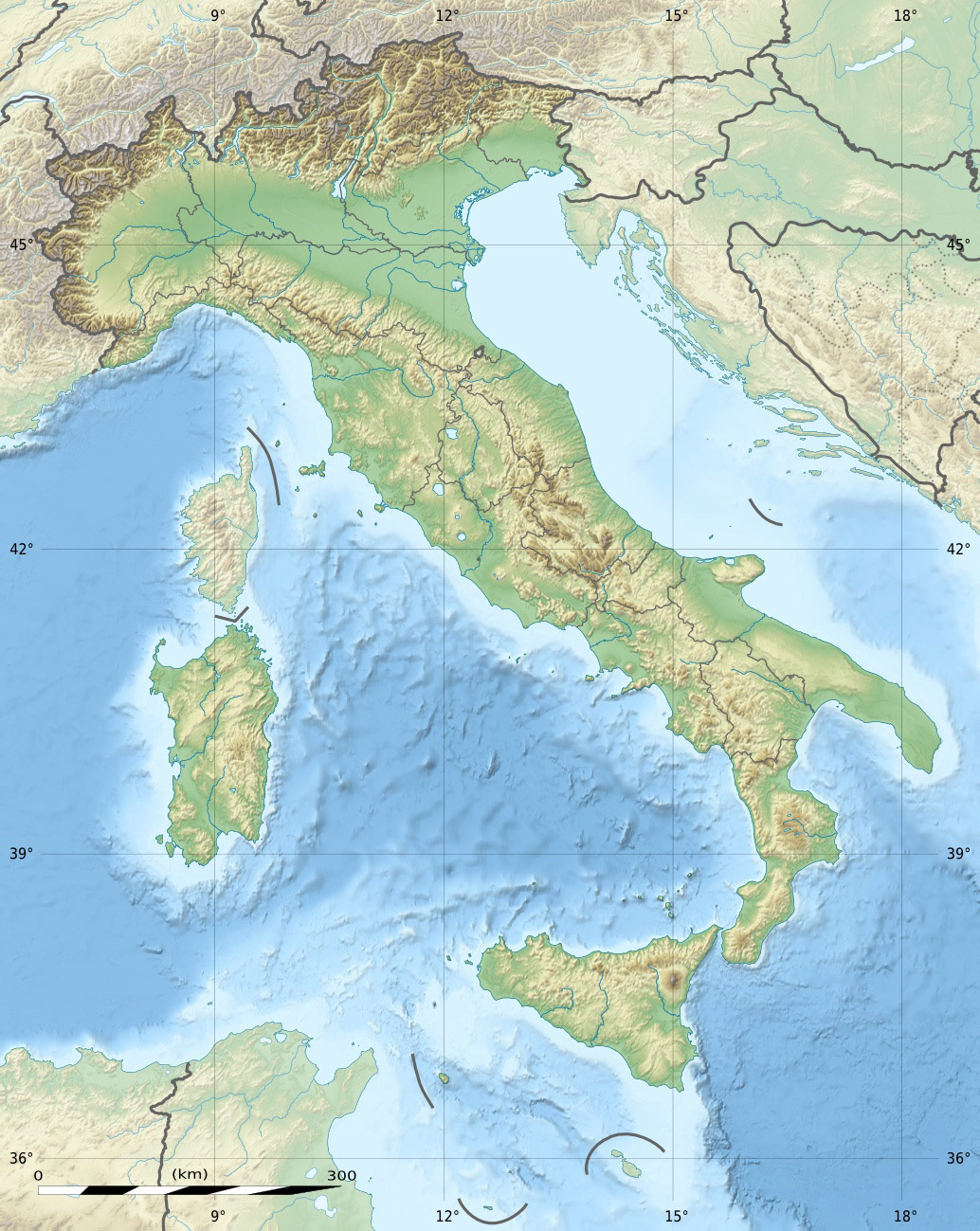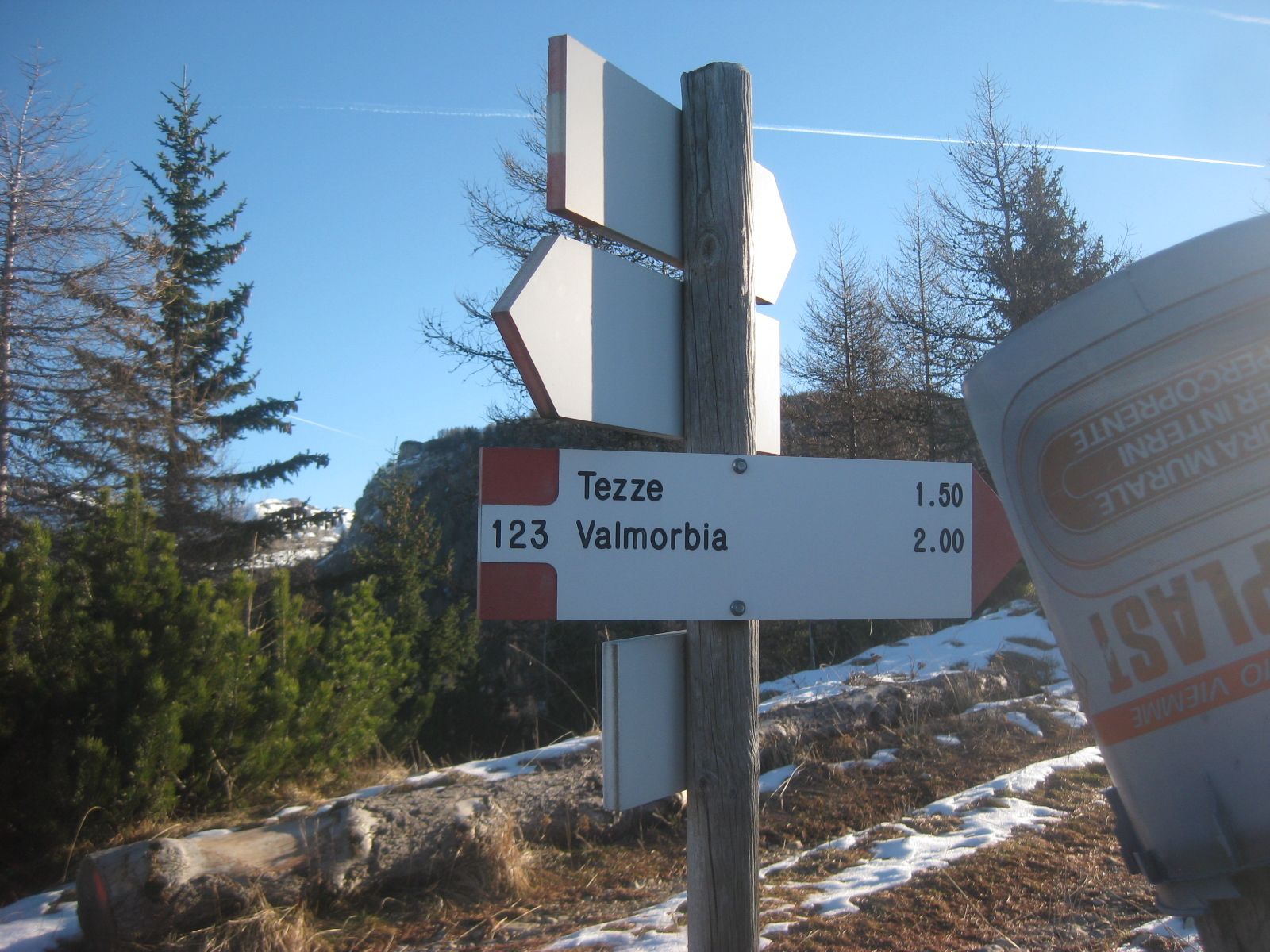"Vivi al meglio la tua Trento 2018!"
I sentieri della Grande Guerra
Un’opera per conoscere storia, vicende e percorsi della Prima guerra mondiale sulle nostre Alpi. 23 proposte di itinerari curati dal Club Alpino Italiano per scoprire i luoghi della Grande Guerra: Adamello, Pasubio, Altopiano dei Sette Comuni, Monte Grappa, Lagorai, Tofane, Monte Piana, Lavaredo, Region Pop
The Story of the Great War, Volume 5
World War I (WWI or WW1), also known as the First World War, or the Great War, was a global war centred in Europe that began on 28 July 1914 and lasted until 11 November 1918. More than 70 million military personnel, including 60 million Europeans, were mobilised in one of the largest wars in history. Over 9 million combatants and 7 million civilians died as a result of the war (including the victims of a number of genocides), a casualty rate exacerbated by the belligerents' technological and industrial sophistication, and the tactical stalemate caused by trench warfare, a grueling form of warfare in which the defender held the advantage. It was one of the deadliest conflicts in history, and paved the way for major political changes, including revolutions in many of the nations involved.The war drew in all the world's economic great powers, assembled in two opposing alliances: the Allies (based on the Triple Entente of the United Kingdom/British Empire, France and the Russian Empire) versus the Central Powers of Germany and Austria-Hungary. Although Italy was a member of the Triple Alliance alongside Germany and Austria-Hungary, it did not join the Central Powers, as Austria-Hungary had taken the offensive, against the terms of the alliance. These alliances were reorganised and expanded as more nations entered the war: Italy, Japan and the United States joined the Allies, while the Ottoman Empire and Bulgaria joined the Central Powers.The trigger for the war was the assassination of Archduke Franz Ferdinand of Austria, heir to the throne of Austria-Hungary, by Yugoslav nationalist Gavrilo Princip in Sarajevo on 28 June 1914. This set off a diplomatic crisis when Austria-Hungary delivered an ultimatum to the Kingdom of Serbia, and entangled international alliances formed over the previous decades were invoked. Within weeks, the major powers were at war and the conflict soon spread around the world.On 28 July, the Austro-Hungarians declared war on Serbia and subsequently invaded. As Russia mobilised in support of Serbia, Germany invaded neutral Belgium and Luxembourg before moving towards France, leading the United Kingdom to declare war on Germany. After the German march on Paris was halted, what became known as the Western Front settled into a battle of attrition, with a trench line that would change little until 1917. Meanwhile, on the Eastern Front, the Russian army was successful against the Austro-Hungarians, but was stopped in its invasion of East Prussia by the Germans. In November 1914, the Ottoman Empire joined the Central Powers, opening fronts in the Caucasus, Mesopotamia and the Sinai. Italy joined the Allies in 1915 and Bulgaria joined the Central Powers in the same year, while Romania joined the Allies in 1916, followed by United States in 1917.The Russian government collapsed in March 1917, and a subsequent revolution in November brought the Russians to terms with the Central Powers via the Treaty of Brest Litovsk, which constituted a massive German victory. After a stunning German offensive along the Western Front in the spring of 1918, the Allies rallied and drove back the Germans in a series of successful offensives. On 4 November 1918, the Austro-Hungarian empire agreed to an armistice, and Germany, which had its own trouble with revolutionaries, agreed to an armistice on 11 November 1918, ending the war in victory for the Allies.By the end of the war, the German Empire, Russian Empire, Austro-Hungarian Empire and the Ottoman Empire had ceased to exist. National borders were redrawn, with several independent nations restored or created, and Germany's colonies were parceled out among the winners. During the Paris Peace Conference of 1919, the Big Four (Britain, France, the United States and Italy) imposed their terms in a series of treaties. The League of Nations was formed with the aim of preventing any repetition of such a conflict. This, however, failed with economic depression, renewed European nationalism, weakened member states, and the German feeling of humiliation contributing to the rise of Nazism. These conditions eventually contributed to World War II.
The Italians occupied the Valmorbia line, in the Vallarsa, the southern slopes of Monte Spil, and began an offensive to the northwest of Pasubio, in the Cosmagnon region. Farther east on the line of the Posina Valley, the Italians took Monte Maggio, the town of Griso, northwest of Monte Maggio; positions in the Zara Valley ...
Il consiglio del giorno:
Impiccateli!
DALL'AUTORE DI "EROI E POVERI DIAVOLI NELLA GRANDE GUERRA", LA STORIA DI DUE EROI ITALIANI
Monte Pasubio - Terre del Mediterraneo
Monte Pasubio. Il facile accesso da Pian delle Fugazze al rifugio Achille Papa - in gran parte percorribile comodamente seduti sui sedili dei minibus che ... nei combattimenti del Monte Ciove, del Monte Novegno e del Passo di Campedello. ..... dicembre 1893, morto in combattimento sul Monte Spil il 30 giugno 1916. 5.
Il Monte Pasubio
Nell'ambito del CAI Milano, il Gruppo "Il Sentiero" sostituisce nel 2009 la Sottosezione Edison dopo la chiusura del Dopolavoro nel quale era inserita. Il Sentiero vuole continuare la tradizione che dura da oltre 60 anni con le escursioni in montagna. L'affiatamento e la grande amicizia che ha da sempre contraddistinto la Sottosezione sarà ancora la caratteristica principale del nuovo Gruppo.
Sul Pasubio, gli Imperiali ottennero quasi immediatamente un primo, importante risultato: il 18 maggio cadeva il Col Santo, e subito dopo anche il monte Testo, garantendo così il consolidamento della linea che da forte Pozzacchio, a O, corre per il monte Spil e giunge fino al piccolo Roite; con la conquista di quota 2206 (il ...
[PASUBIO] Alpe Alba - Lancia - Foxi - Battisti - Spil
5 ago 2009 - Alla bocchetta dei Foxi siamo saliti e ridiscesi fino alla Sella Battisti con il 122, da lì con il 119 B dal valico del Menderle e passato il monte Spil siamo ridiscesi ad incrociare la forestale al Lancia passando per la malga Monticello. Giretto da 6 h, paesaggi bellissimi (c'era ancora neve sopra i 2000 - 2200), ...
Forum di escursionismo in montagna in Trentino Alto Adige e Triveneto. Itinerari, relazioni, trekking, foto, informazioni, tracce GPS e consigli sulle pi

Grande Guerra, Pillola 97: verso il Monte Pasubio, la terribile epopea ...
23 ott 2016 - In pratica, il massiccio del Pasubio inizia poco sopra Rovereto, nella valle delle Pozze, ingloba monte Spil, il Colsanto e, salendo, diviene sempre più roccioso: i prati dello Spil lasciano il posto ad un deserto pietrificato, delimitato dalle tre valli, Vallarsa, Terragnolo e Posina, che, alla fine, precipita verso ...
Assalti e contrassalti caratterizzarono le battaglie tra italiani e austroungarici sul Pasubio fino al sopraggiungere di un inverno rigidissimo che trasformò il fronte in un immenso cantiere, in cui si scavava e si costruiva, si spalava e si moriva di morte bianca.
Luoghi vicini - Memorie di Guerra - View Luoghi
IGM, 513, 1916-10-13, Nella zona di monte Pasubio respingemmo violenti attacchi fra monte Spil e monte Corno e lungo le pendici meridionali del Roite. Indi le nostre truppe assali... IGM, 655, 1917-03-04, Nella giornata del 3 piccoli scontri sulle pendici orientali di Monte Spil (Vallarsa), nei pressi di Canove di Sotto (Valle ...

Monte Corno Battisti - Wikipedia
Ma nel 1916 le truppe austro-ungariche passano all ' offensiva (la Strafexpedition), cercando di sfondare sul Pasubio e sull ' Altipiano dei Sette Comuni. La nuova linea del fronte ritorna a passare in Vallarsa, da Valmorbia al Monte Spil e di qui al Monte Corno (che viene preso), la Bocchetta della Val Foxi, verso il Monte ...

123 Valico del menderle | Itinerari trekking on WordPress.com
Tempo di percorrenza del sentiero solo andata : 2h45 Fino al corno Battisti : 3h15 Dislivello totale : 1030 m Corno battisti : 1170 m Quota massima raggiunta : 1451 m Corno battisti : 1778 m Dopo aver superato il pian delle Fugazze proseguendo verso Rovereto si arriva all'abitato di Val Morbia , si posteggia…
Pasubio Monte Testo - foto trekking trentino
Il giorno 19 dopo aver vittoriosamente respinto un contrattacco Italiano sul Monte Spil le truppe Austro- Ungariche prendevano possesso del Monte Testo, che non avrebbero più abbandonato fino alla fine del conflitto. Con la successiva avanzata la prima linea del fronte sul Pasubio venne a trovarsi nella zona tra il Dente ...
pasubio-di-qui-non-si-passa- - Associazione Nazionale Alpini
25 set 2008 - 19 maggio 1916 Gli austriaci occupano il Monte Spil e una delle cime più alte del Pasubio, il Col Santo. La controffensiva italiana sul Monte Spil e sul Monte Testo fallisce. I reparti della brigata Volturno salgono sul massiccio sud del Pasubio con il compito di organizzare la difesa di Cima Palon, ultimo ...
Il Pasubio - una montagna in guerra - Storia e Memoria di Bologna
Il 24 maggio 1915 gli alpini del battaglione Vicenza salirono rapidamente ad occupare il Pasubio, seguiti dai fanti della Brigata Roma; nei giorni seguenti, ricevuti rinforzi, l'occupazione italiana proseguì sino ad incontrare la linea di resistenza austriaca, distesa tra il Col Santo, il monte Spil ed il monte Testo. Poiché il ...
Monte Spil - sito SAT
Gruppo montuoso: Pasubio - Col Santo. Luogo di partenza: Malga Chèserle. Luogo di arrivo: Malga Chèserle. Dislivello in salita/discesa: 620 m. Tempo di percorrenza: Ore 5. Difficoltà: E con tratto EE. Segnavia SAT: 119 - 119B - 122 - 102 - 101 Altri segnavia: NO. Il Monte Spil è inserito nell'escursione ad anello che ci ...
Trentino Grande Guerra - Monte Testo
Una natura per nulla austera con pascoli, abetaie e colori tipici di un altopiano vi attendono sul monte Pasubio, almeno fino a quando non si arriva all'area dei ... si può tornare a Bocchetta Foxi e scendere a Malga Zocchi oppure seguire le indicazioni per il valico del Menderle, il monte Spil e malga Monticello (1395 m).
Sito dedicato a Trentino Grande Guerra


